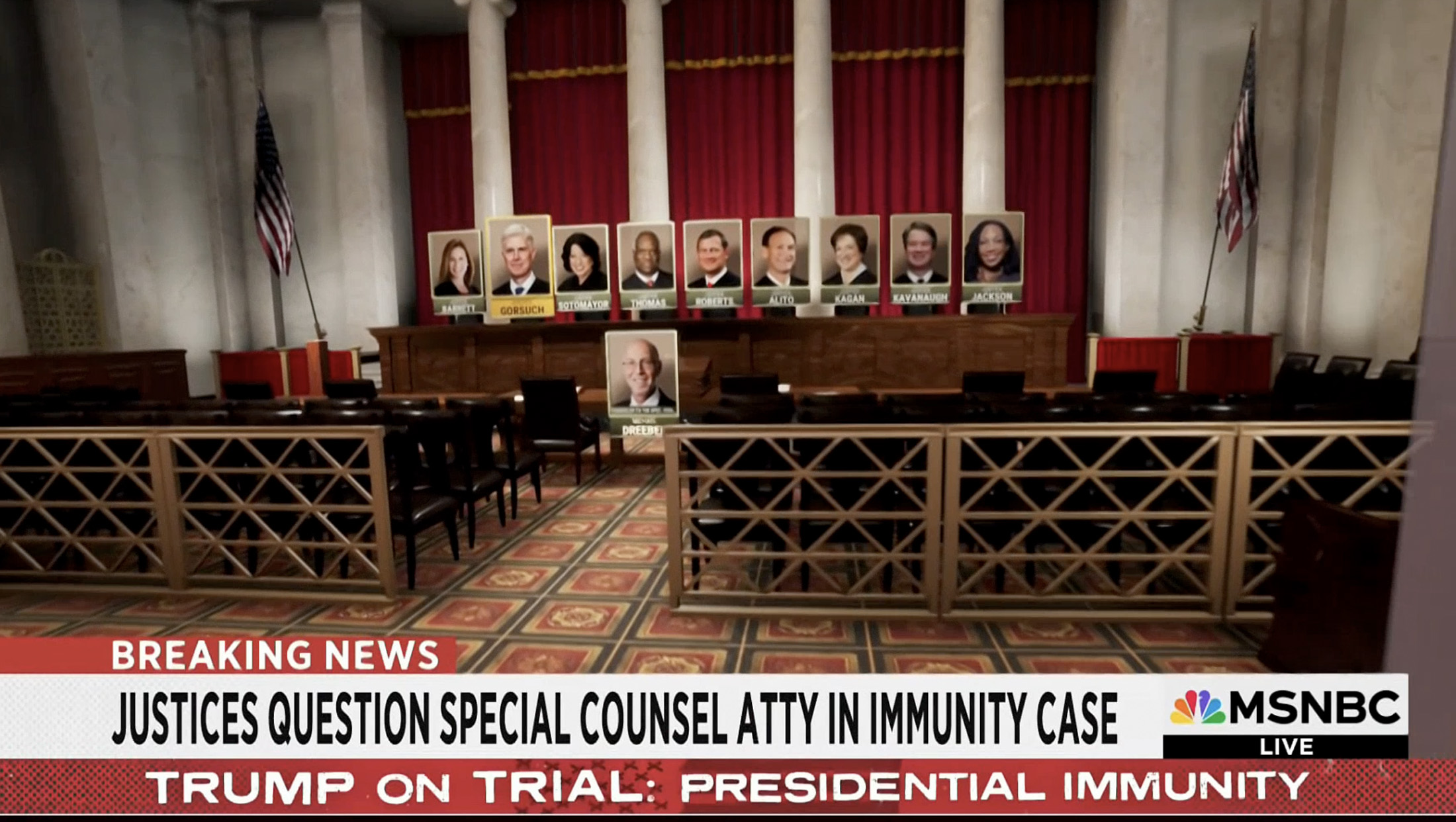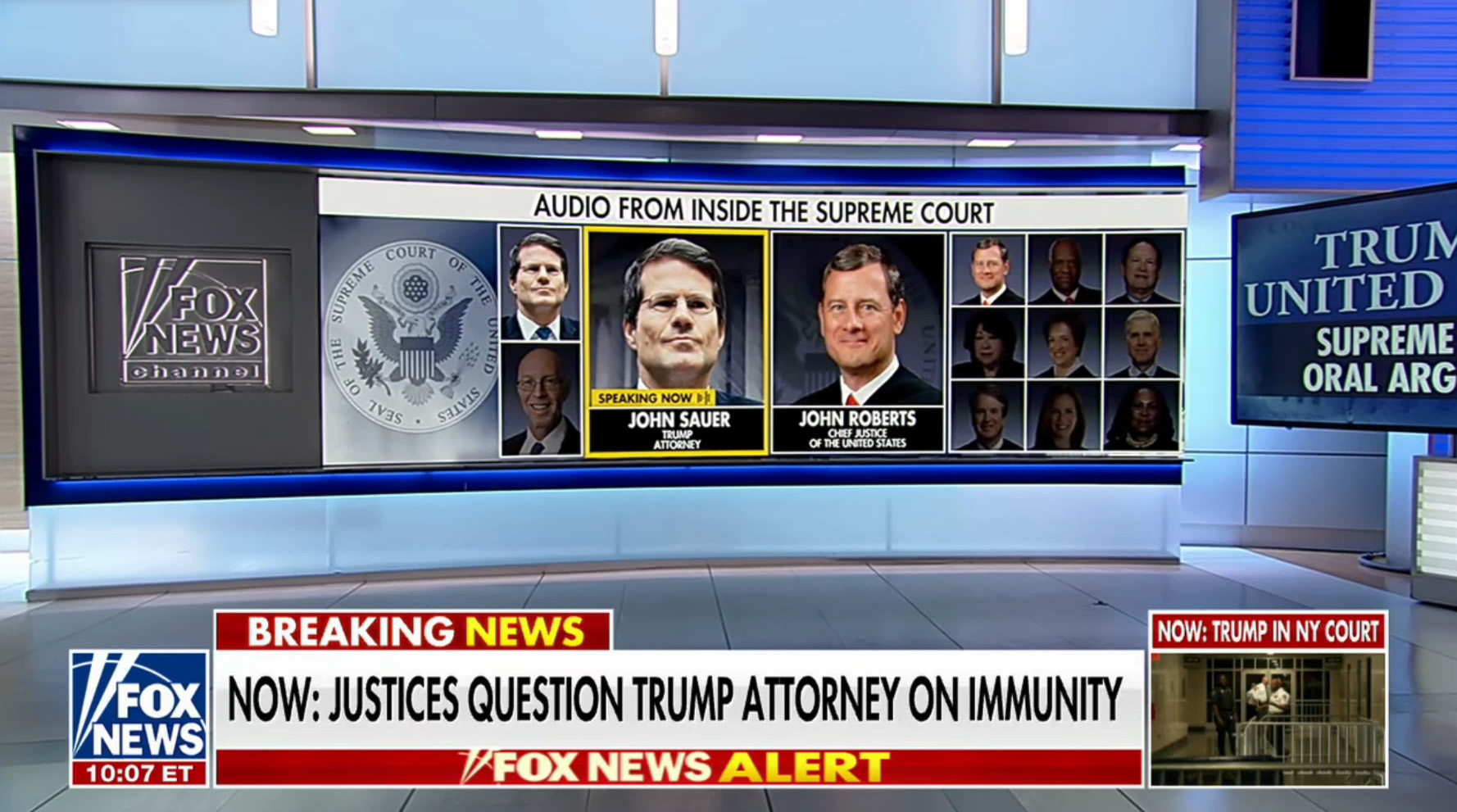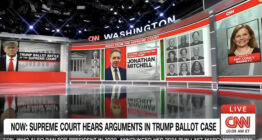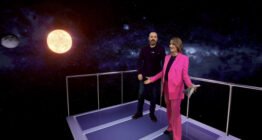MSNBC adds virtual extended reality courtroom for audio-only SCOTUS coverage

Subscribe to NCS for the latest news, project case studies and product announcements in broadcast technology, creative design and engineering delivered to your inbox.
MSNBC has seemingly raised the stakes in how it covers audio-only court proceedings after CNN offered up elaborate video wall shots with key features to enhance its coverage during the February 2024 ballot battle at the U.S. Supreme Court.
During those arguments, CNN, MSNBC and Fox all used video wall and fullscreen graphics to help inject visuals over the live audio feed from inside the SCOTUS building (cameras are banned from the courtroom).
CNN’s look was perhaps the most effective, with graphics that provided visual cues as to who was speaking. While Fox also used on-screen visuals — albeit in a different approach — to indicate who was speaking, MSNBC’s coverage wasn’t quite as clear, but the network appears to have been taking notes and upped its game during another Trump proceeding at SCOTUS, this time about presidential immunity.
Arguments in that case were heard April 25, 2024, were carried across all three networks again.
CNN largely stuck with the same format it used in February, and MSNBC continued with some of the same looks it used before.
However, MSNBC notably added an extended reality element that blended in with its real studio thanks to the green box studio space adjacent to Studio 3A in Rockefeller Center.
The network rolled open the sliding wall panels on the west side of the space to reveal the green screen-equipped space, though viewers saw a 3D virtual recreation of the main SCOTUS courtroom.
The look also included floating 3D frames with headshots of the justices and attorneys, each positioned over his or her place in the room.
MSNBC deployed a floating “walk and wander“-style camera that could move between the real studio space and green screen area. In the virtual space, the camera’s near-constant movements interacted with the 3D space, with perspectives, focus and layering changing as the camera moved.
This allowed the operator to move in close to a specific justice or attorney headshot when he or she was speaking.
Justices’ frames also became slightly larger and yellow when the corresponding judge was speaking (this effect wasn’t used for the presenting attorneys).
MSNBC also had the ability to switch from one shot to another within the virtual space, allowing it to cut between, for example, a tighter shot to a wider view as needed.
Despite being decidedly earthly, the virtual courtroom had some similarities to the network’s April 8, 2024, coverage of the total solar eclipse, when the green screen place was replaced with a view of space complete with an observation platform for talent. During this coverage, the camera also moved around in the green box studio with the perspective between the sun, moon and Earth changing in real-time, including allowing the operator to simulate the appearance of an eclipse.
Like February, MSNBC also used the vertical-ceiling mounted panels, the seamless LED arrays installed on either side of the green studio’s opening and the nearly floor-to-ceiling video wall and ribbon sometimes known as the “Kornacki Curve” as additional ways to display headshots of speakers with the added ability to move between these and the virtual space.
The LED wall to the right of the green screen studio opening, which is near the vertical panels, could also be used to showcase B-roll or lists of key information, while the left side was used to display simulated red curtains with gold trim inspired by the courtroom. The space’s mobile touchscreen was positioned near the end of the curve and could be used for B-roll footage as well, often used in conjunction with the ribbon and wall camera left of it.


Fox, meanwhile, also updated its on-screen visuals slightly to include better indications of who was speaking and the addition of audio bar animation and a prominent “speaking now” labeled. This offer a significant improvement over the last round in February, when it was often difficult to tell who was speaking when the on-screen graphics didn’t always change or generic SCOTUS video was shown instead.
Subscribe to NCS for the latest news, project case studies and product announcements in broadcast technology, creative design and engineering delivered to your inbox.






tags
CNN, Extended Reality, Kornacki Curve, MSNBC, SCOTUS, Studio 3A, Supreme Court, Video Walls, Walk and Wander
categories
Augmented Reality, Virtual Production and Virtual Sets, Cable News, Heroes